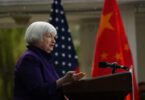The administrative actions taken by the provincial governments against hoarding and overpricing and the supply augmenting measures of the federal government have failed to reasonably lower the prices of commodities of daily consumption. The rising trend of prices continues both in perishable and non-perishable food items on daily basis. Greater surge in price has been witnessed in the rates of vegetables. The overall unprecedented increase has been confirmed by the Pakistan Bureau of Statics Report for the month of December, projecting the rate of inflation above 12 percent calculates on the basis of consumer price index. The rate of food inflation is higher than the official figures.
The daily market pulse tells about the pea’s price of Rs.200 per kilogram’ of colocassia potato at Rs.100 a kilogram; of ordinary potato Rs.80; and cucumber is sold at Rs.100. The price of tomatoes which has come down to Rs.120 per kilograms is rising again and has gone up to Rs.180 per kilogram. The price of onions has gone up to Rs.80 and that of garlic to Rs.320 a kilogram. The prices of pulses, dry skimmed milk and milk pack are also on the rise. All these commodities are consumed by the families of low and middle income groups which are always hit hard by inflation rate than rich classes.
Supply augmentation in the market is the responsibility of federal government. Federal government intends to lower the soaring prices of pulses by fixing indicative prices by taking into account the production cost and profit margin of farmers. But it is the distributer, middleman and whole seller who earn maximum profit. The cost of seeds and fertilizers almost wipe out the profit margin of small farmers. The prices of food commodities will not come down until the crisis in agriculture sector is overcome by reducing the production cost.






